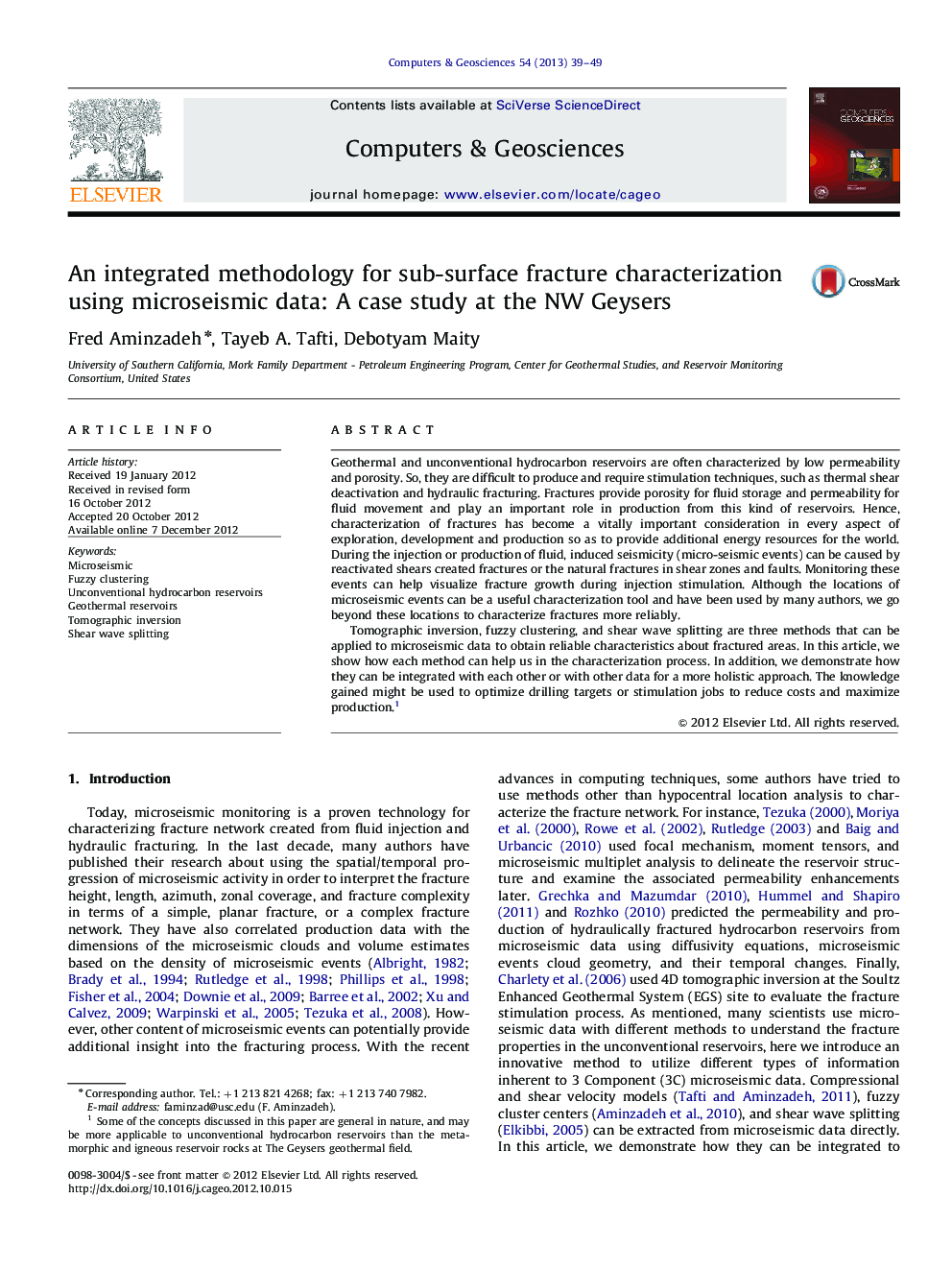| Article ID | Journal | Published Year | Pages | File Type |
|---|---|---|---|---|
| 507009 | Computers & Geosciences | 2013 | 11 Pages |
Geothermal and unconventional hydrocarbon reservoirs are often characterized by low permeability and porosity. So, they are difficult to produce and require stimulation techniques, such as thermal shear deactivation and hydraulic fracturing. Fractures provide porosity for fluid storage and permeability for fluid movement and play an important role in production from this kind of reservoirs. Hence, characterization of fractures has become a vitally important consideration in every aspect of exploration, development and production so as to provide additional energy resources for the world. During the injection or production of fluid, induced seismicity (micro-seismic events) can be caused by reactivated shears created fractures or the natural fractures in shear zones and faults. Monitoring these events can help visualize fracture growth during injection stimulation. Although the locations of microseismic events can be a useful characterization tool and have been used by many authors, we go beyond these locations to characterize fractures more reliably.Tomographic inversion, fuzzy clustering, and shear wave splitting are three methods that can be applied to microseismic data to obtain reliable characteristics about fractured areas. In this article, we show how each method can help us in the characterization process. In addition, we demonstrate how they can be integrated with each other or with other data for a more holistic approach. The knowledge gained might be used to optimize drilling targets or stimulation jobs to reduce costs and maximize production.1
► Microseismic data for fracture characterization. ► Novel approach in fuzzy clustering, tomographic inversion, and shear wave splitting. ► Innovative Integration of different types of information from microseismic data. ► Acquire more reliable and accurate result in fracture characterization.
